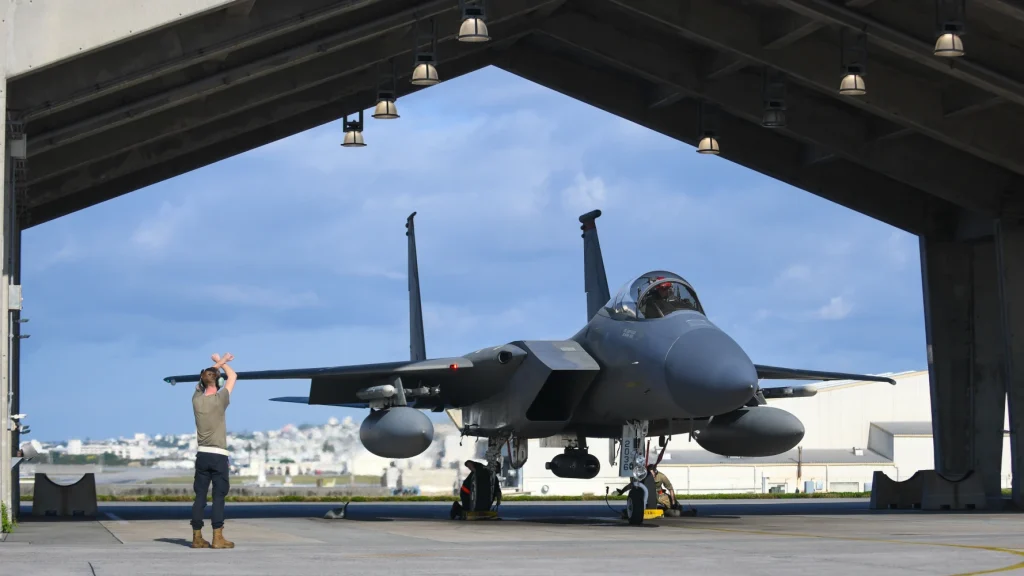The People’s Liberation Army (PLA) has conducted frequent military exercises in Taiwan’s Air Defence Identification Zone (ADIZ). The United States recently agreed to sell Taiwan $500 million worth of military equipment, including “Infrared Search and Track” (IRST) Legion pods for F-16V fighter aircraft to detect Chinese J-20 fighter jets effectively.
Taiwan has purchased 66 F-16V fighter aircraft from the United States, and it is anticipated that they will all be delivered by the end of 2026. Taiwan’s new and upgraded F-16Vs have the cutting-edge APG-83 scaled agile beam radar to combat stealth aircraft. The IRST will permit F-16V fighter jets to effectively detect stealth aircraft, small drones, and other targets without switching on the radar and avoid detection.
The Indian Air Force in 2018 stated that its Su-30MKI Flankers had tracked J-20s via radar. In addition to the radar, the SU-30MKI is equipped with the OLS-30 laser-optical Infrared search and track system, which is used in conjunction with the helmet-mounted sighting system. The OLS-30 combines an IRST/LR device with a cooled, wide-bandwidth sensor. The detection range is up to 90 km, while the effective range of the laser rangefinder is 3.5 km.
IRST sensors effectively detect and trace hidden air threats, are immune to EW systems, and operate passively, so the target will not be notified that it has been detected.
According to Taiwanese media, when equipped with infrared tracking and surveillance systems, F-16V fighter aircraft can detect stealth targets up to 240 kilometres away. In addition to launching assaults with onboard missiles, these aircraft can transmit data to wingman aircraft that lack the system. The wingman aircraft can then use the information to initiate attacks against hostile aircraft. Theoretically, the upgraded F-16V aircraft currently in service with Taiwan could also be equipped with this system.
Deputy Researcher at Taiwan’s National Defence Academy Shu Xiaohuang stated in an interview with the local media that radars have difficulty detecting stealth aircraft. However, even stealth aircraft generate heat sources due to air friction against their airframe and engine operation. Infrared technology can, therefore, be used for monitoring and surveillance.
Zhang Yanting, former Deputy Commander of the Taiwanese Air Force, stated in an interview that the IRST is essential for bridging the performance gap between Taiwanese and mainland advanced aircraft due to the limitations of Taiwan’s Air Force radar in detecting mainland China’s stealth aircraft.
Zhang Yanting noted that if mainland China were to attack Taiwan and conduct a landing operation, it would require sea and air superiority. Taiwan’s air defence must be strengthened to prevent mainland forces from landing on Taiwan. Taiwan’s defence operations for the Taiwan Strait and Penghu would be disadvantaged if it lost air superiority. The US military’s arms sale to Taiwan aims to improve the island’s air defences.

According to Shu Xiaohuang, many Russian-made aircraft have infrared tracking and reconnaissance systems incorporated into their airframes. In contrast, many American-made aircraft are not equipped with such systems and, therefore, employ external pods. The integration testing of the IRST system by the US Air Force was concluded in 2021, and the full deployment of this system to their armed services is still pending.
It is essential to remember that different experts have different points of view, and the efficacy of such equipment in combating stealth aircraft might vary depending on various circumstances, such as technological capabilities, tactics, and operational conditions.
Since the range of the PL-15 air-to-air missile is rumoured to be 300 kilometres, the J-20 is expected to have a radar with a range of at least 350 kilometres. It is believed that the J-20 is designed with the airframe-based IRST. On the other hand, Taiwanese F-16Vs are equipped with the 100+ kilometer-range AIM 120 BVR Advanced Medium-Range Air-to-Air Missile (AMRAAM). Theoretically, if the Chinese position their J-20s 200 kilometres away, it will deter Taiwanese F-16Vs from taking off from their airfields, enabling Chinese bombers to operate while grappling with Taiwan’s Surface-to-Air network.
F-16Vs from Taiwan must contend with Chinese J-11s and J-16s before reaching J-20s. At the same time, only skill, fate, and technology determine the victor if the F-16Vs and J-20 engage within the effective F-16 BVR range. It is believed that in addition to J-20s, the People’s Liberation Army Air Force has coated its imported Sukhoi Su-35 squadron with radiation-absorbing paint to give them a measure of stealth.
However, the Chinese J-20 may be unable to afford such indulgences as it must compete with Taiwanese F-16Vs backed by allied F-35s and F-22s.
At its narrowest point, the distance between the Chinese and Taiwanese shores is only 130 kilometres, after which it expands to more than 200 kilometres. Taiwan’s dense Surface will also challenge J-20s. Taiwan has reportedly tested and deployed domestic mobile passive radar systems to defend against Chinese stealth aircraft. In 2018, the Chungshan Institute published a fact sheet stating that the F-16V radars would be remotely linked to land-based phased array radar systems and “magnify” the cross-section to detect objects without emitting radiation, making them less susceptible to electronic warfare interference and anti-radiation missile attacks.
